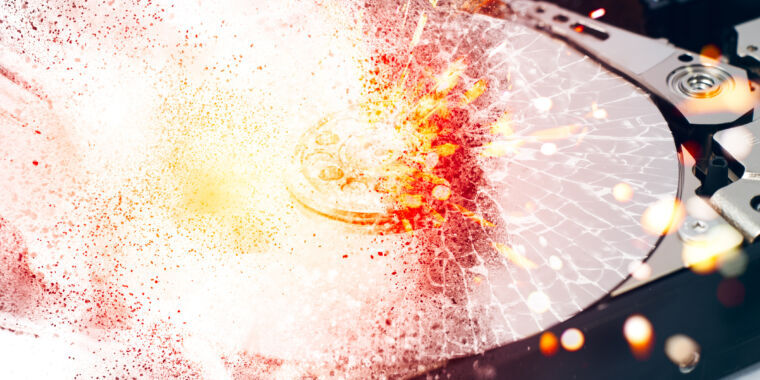My father told me he wanted to make USB flash drives of all the scanned and digitized family photos and other assorted letters and mementos. He planned to distribute them to all family members hoping that at least one set would survive. When I explained that they ought to be recipes to new media every N number of years or risk deteriorating or becoming unreadable (like a floppy disk when you have no floppy drive), he was genuinely shocked. He lost interest in the project that he’d thought was so bullet proof.



This is important, and for some media, it should be more often than that.
People forget that flash memory uses electrical charge to store data. It’s not durable. If left unpowered for too long, that data will get corrupted. A failure might not even be visible without examining every bit of every file.
Keep backups. Include recovery data (e.g. PAR2). Store them on multiple media. Keep them well-maintained (e.g. give flash drives power). Mind their environment. Copy them to new storage devices before the old ones become obsolete.
It’s funny that with all our technology, paper is still the most durable storage medium (under normal conditions) that doesn’t cost an arm and a leg.
Sophistication often creates fragility. The human mind marvels at sophistication naturally; appreciation for resilience usually only comes after that fragile thing has broken. Of course it’s too late by then.
All them young whipper snappers will continue to learn these life lessons the hard way, it seems.
If I had a cent every time an artist on patron had their computer die on them and lost works in progress or all their old stuff… I’d afford a few coffees.
Maybe you should have asked for a dollar everytime that happened. Youd be rich I tell ya!
Tape backups, baby.
No, I don’t have a library of those. I don’t even have a tape drive.
This is my next step, i just wish tape drives werent so expensive.
Anything important, I write on clay tablets.
Yeah, but the link in the article, strict checks and no data loss over 52 weeks. Not neccessarily in USB sticks though. And sure, backups.
That number is a single manufacturer’s performance target. It is not a guarantee of results. You might be able to get Intel to replace an SSD if it corrupts data in under 52 weeks (assuming you notice it) but your data will still be gone.
Hardware performance can and does vary by manufacturer, model, and production run. Even the nominally identical cores within a single CPU have slightly different operating limits. YMMV.
Note also: the 52 week target you quoted is halved for every 5° rise in temperature.